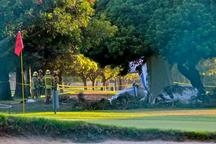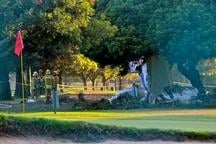
SMO — Residents opposed to noise from planes that fly over Sunset Park and Ocean Park after takeoff from Santa Monica Airport were raising safety concerns on Friday, a day after a small plane that took off from SMO crashed at Penmar Golf Course in Venice.
The pilot of the small plane, Robert R. Davenport, 60, was killed in the crash, which occurred just after 6 p.m. Friday near the eighth hole of the golf course, authorities said. Davenport was the only person onboard the Cessna 152, and no bystanders were hurt.
But for some Santa Monica residents, the crash raised new concerns about a possible rule change at SMO that would direct more planes to fly over residential neighborhoods in town after takeoff.
The FAA last month ended its 180-day flight path test that had required some small planes to take an alternate route out of SMO, flying northwest toward the Santa Monica Pier — and over densely populated Santa Monica neighborhoods — rather than flying over the Penmar Golf Course as they head west.
Residents in the affected neighborhoods have organized to oppose a possible effort to make the test flight path permanent, lodging thousands of noise complaints with airport officials.
The FAA has not announced whether it will seek to make the experimental flight pattern permanent, but has said preliminary analysis showed the test was effective at reducing delays at SMO and LAX by cutting down on the amount of time jets have to wait for smaller planes to exit shared air space.
By cutting down the time planes idle on the runway, FAA officials hope the experimental flight pattern can lessen the environmental impact created by airplane emissions.
On Friday, residents said they were thankful the plane crash hadn’t occurred in a populated area where it could have caused greater damage.
“This crash — unfortunately it’s an example that we would have preferred not to have had,” said Lisa Hughes, chair of the group Neighbors for a Safe & Healthy Community, which is fighting to keep airplane traffic away from Santa Monica neighborhoods.
“Through the grace of god this pilot landed on the golf course and didn’t hurt anybody … . Imagine if he didn’t have an open place to land,” she said.
While the crash was a tragedy, Hughes said it could have been much worse if the pilot had been taking the test flight path, also known as a “250 degree heading.”
“If it was on the 250 heading it could go right into one of our schools, or my house,” she said.
The incident was the first fatal crash to result from a takeoff from SMO since February of 2009, said Airport Director Bob Trimborn.
Though the crash happened in Venice, Trimborn said SMO staff members were the first to arrive on the scene.
A group of six airport employees were playing golf at Penmar after work on Thursday and had just played the ninth hole when the Cessna careened onto the course.
“They heard the engine start to sound funny, then turned to look and saw the aircraft go into the trees,” Trimborn said.
He said an airport staff member approached the wreckage and, after realizing there was no way to provide medical help, protected the area until rescue workers arrived.
Trimborn said no information about the cause of the crash was immediately available. He said the National Transportation Safety Board and the FAA will be in charge of the investigation.
Stepping into the fray
Meanwhile, new support for making the FAA’s test flight pattern permanent emerged, as Los Angeles City Councilman Bill Rosendahl on Thursday said in a press release the change would dramatically reduce the number of idling aircraft that spew emissions over Los Angeles neighborhoods.
“This new procedure is better for people in Venice, Mar Vista and West L.A. surrounding [SMO],” Rosendahl said. “I am grateful that the FAA tested this procedure, and I strongly encourage all my constituents to urge federal officials to implement it permanently.
“I can’t ask a kid living in Venice, Mar Vista or West LA to play in a black cloud of aircraft emissions so that someone in Santa Monica is spared the noise impacts.”
nickt@www.smdp.com








